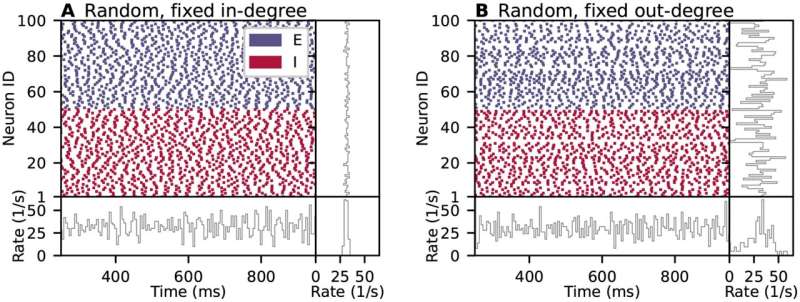
Researchers who work with neuronal network models—simplified representations of brains—need to “speak the same language” so that their results can be understood and reproduced. Scientists at the Human Brain Project now propose guidelines for the unambiguous description of network connectivity.
The guidelines are based on concepts in use in the computational neuroscience community. To provide an intuitive understanding of network properties, they also propose a graphical notation for network diagrams unifying existing diagram styles.
The researchers found that published descriptions of network connectivity are often incomplete and imprecise. This may in turn lead to wrong predictions of network activity when attempting to reproduce model results, as even small differences between rules may lead to different network dynamics.
“Precise definitions of connectivity rules are crucial for the correct and efficient algorithmic implementation of a network in simulators,” said neuroscientist Johanna Senk, the lead author of the study. The researchers hope that the guidelines they propose will increase reproducibility, because they will ensure that when two neuroscientists use the same term or symbol they mean the same thing.
This consistency is also an important factor in overcoming the current complexity barrier, notes Prof. Sacha van Albada of Forschungszentrum Jülich, head of the research group “Theoretical Neuroanatomy”. Most neuronal network models that have been developed until now still have limited complexity. But the new EBRAINS digital research infrastructure built by the HBP is now making increasingly complex models manageable for individual scientists as Sacha van Albada points out.
Source: Read Full Article